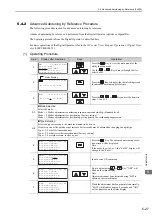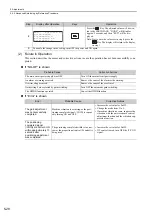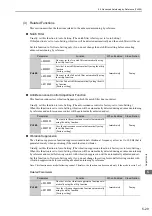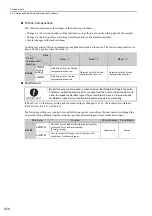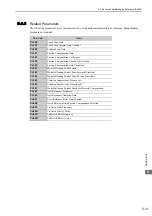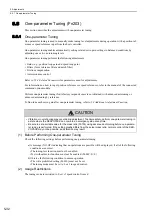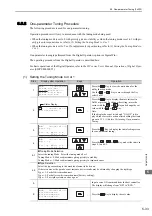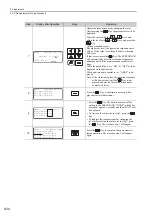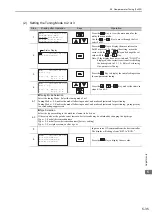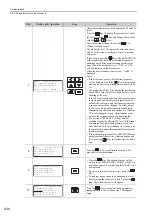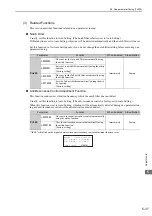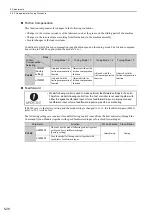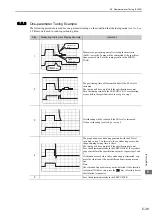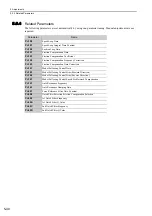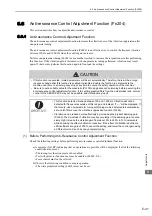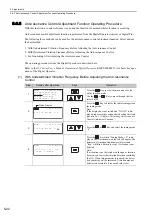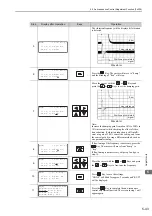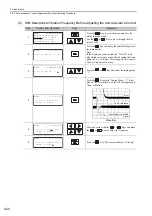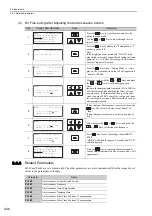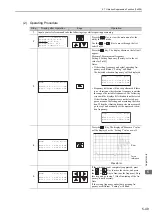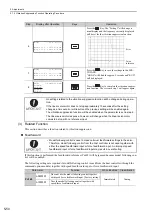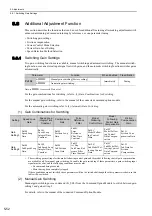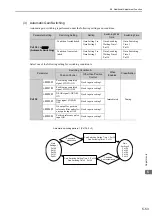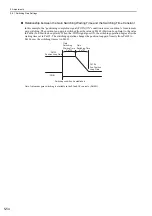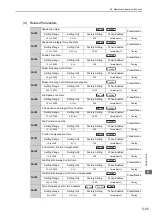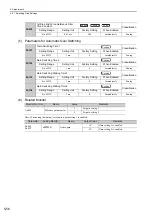
5.6 Anti-resonance Control Adjustment Function (Fn204)
5-41
5
Adjustments
5.6
Anti-resonance Control Adjustment Function (Fn204)
This section describes how to adjust the anti-resonance control.
5.6.1
Anti-resonance Control Adjustment Function
The anti-resonance control adjustment function increases the effectiveness of the vibration suppression after
one-parameter tuning.
The anti-resonance control adjustment function (Pn204) is an effective way to control the frequent vibration
between 100 Hz and 1000 Hz when the control gain increases.
Perform one-parameter tuning (Fn203) or use another method to increase the responsiveness after performing
this function. If the vibration gain is increased with one-parameter tuning performed, vibration may result
again. If that occurs, perform this function again to fine-tune the settings.
(1) Before Performing Anti-Resonance Control Adjustment Function
Check the following settings before performing anti-resonance control adjustment function.
a) A message (NO-OP) indicating that no operations are possible will be displayed, if all of the following
conditions are not met.
• The tuning-less function must not be enabled.
• Test without motor function must not be enabled. (Pn00C.0=0)
• Force control must not be selected.
b) Observe the following condition to ensure operation.
• The write prohibited setting (Fn010) must not be set.
CAUTION
• If this function is executed, related parameters will be set automatically. Therefore, there will be a large
response change after this function is enabled or disabled. Enable the function in a state where the
machine can come to an emergency stop at any time to ensure the safety operation of the machine.
• Be sure to set a suitable value for the mass ratio (Pn103) using advanced autotuning before executing the
anti-resonance control adjustment function. If the setting greatly differs from the actual mass ratio, normal
control of the SERVOPACK may not be possible, and vibration may result.
• This function detects vibration between 100 and 1,000 Hz. Vibration will not be
detected for frequencies outside of this range, and instead, “F----” will be displayed. If
that occurs, use one-parameter tuning with tuning mode 2 selected to automatically
set a notch filter or use the vibration suppression function (Fn205).
• Vibration can be reduced more effectively by increasing the present damping gain
(Pn163). The amplitude of vibration may become larger if the damping gain is exces-
sively high. Increase the vibration gain from about 0% to 200% in 10% increments
while checking the effect of vibration reduction. If the effect of vibration reduction is
still insufficient at a gain of 200%, cancel the setting, and lower the control gain using
a different method, such as one-parameter tuning.

